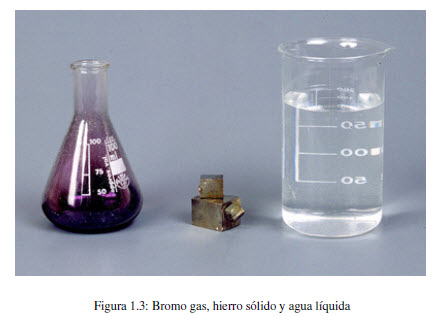 Matter can be classified into three clearly differentiated states.
Matter can be classified into three clearly differentiated states.In the solid state, substances are rigid, difficult to deform, have a significant hardness, and are not very compressible. In crystalline solids, the atoms are arranged in defined positions, generating an ordered structure that is repeated in space. An example of a crystalline solid is common salt (NaCl), the sodium and chlorine atoms are arranged to form small cubes that by repetition generate the crystal.
In the liquid state , the particles (atoms or molecules) are free to move and the substance takes the shape of the container that contains it. Liquids, like solids, are not very compressible, although they deform without any effort. A substance in the solid phase has a slightly higher density than in the liquid phase. There are exceptions such as the case of water, ice is less dense since it floats on the liquid.
In the gas phase , the substances are not very dense and occupy the entire container that contains them. The atoms or molecules are far apart and the interactions are much less than in the solid or liquid phase. Gases are highly compressible and their volume is highly dependent on pressure and temperature.



